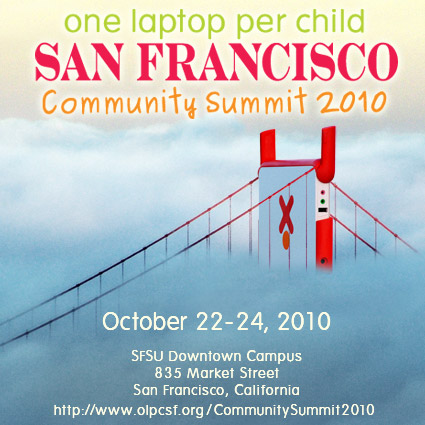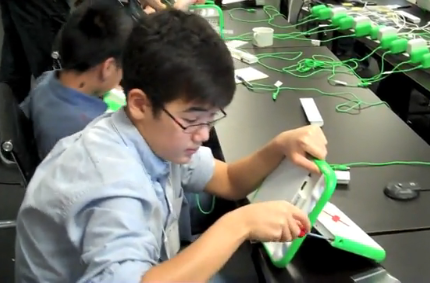Sameer Verma and OLPC-SF are putting the finishing touches on what’s going to be an amazing community event at SFSU this weekend — an international Community Summit for OLPC hackers, implementers, and researchers from dozens of countries and projects. We’ll kick off with an evening party tonight and then with a full agenda from tomorrow morning through Sunday night.
Mike Lee, Andreas Gros, Tim Falconer, Tabitha Roder, Marina Zdobnova and others have been taking part in the Books in Browsers event, so I can confirm that people from a few different countries have already arrived. And we will have some nice surprises for attendees tonight and tomorrow morning… so please join us early!


